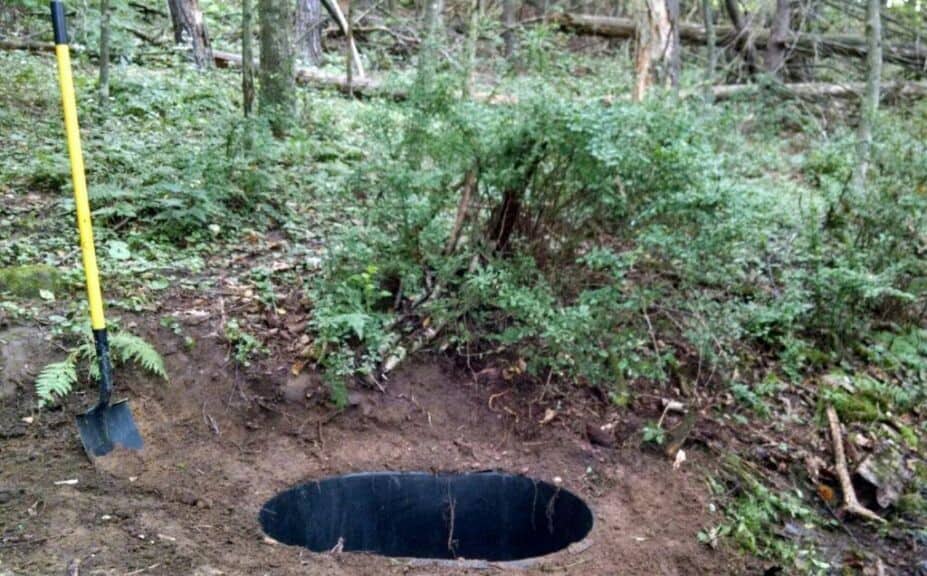For any hunter that is interested in habitat management that wants to start growing their very own trophy bucks, it can often be a challenge to have enough property to do so. Obviously, not everyone can afford to buy hundreds of acres of land to start getting into whitetail habitat management. So, most of us wind up hunting on smaller parcels of land and have to make do with what we have. Does that mean we cannot attract and hold trophy bucks on our small properties? Of course not, but you may have to go the extra mile to make deer in your area want to spend more of their time on your property rather than your neighbors.
What is a “Small” Property?
Small is a relative term. A small piece of land to one hunter may be huge to another hunter, but putting the expectations of the hunters aside, we can all remember the fact that the average deer spends its life within one square mile. That may sound small at first, but a square mile is actually 640 acres. So if you own less than 50 acres you can expect that deer to spend the majority of their time on other properties. Granted, all of those properties may not be hunted, but that depends on your particular situation.
So when I say small, I am going to define that as any parcel of land around 10 – 100 acres. I know that 100 acres sounds huge to the average joe–including me–but considering the home range of most whitetails, you will not be able to control every aspect of the whitetail population with a parcel this size. So it is going to be difficult to properly manage your deer and grow true trophies if your neighbors are shooting every basket size 8 point they see.
While it will be a large challenge to improve the overall deer herd with a small parcel, we have much better odds at just attracting most of the deer in the area to your property. Plus, if you give the deer in your area everything they need to survive and thrive, and your neighbors don’t, why wouldn’t deer want to spend most of their time on your property?
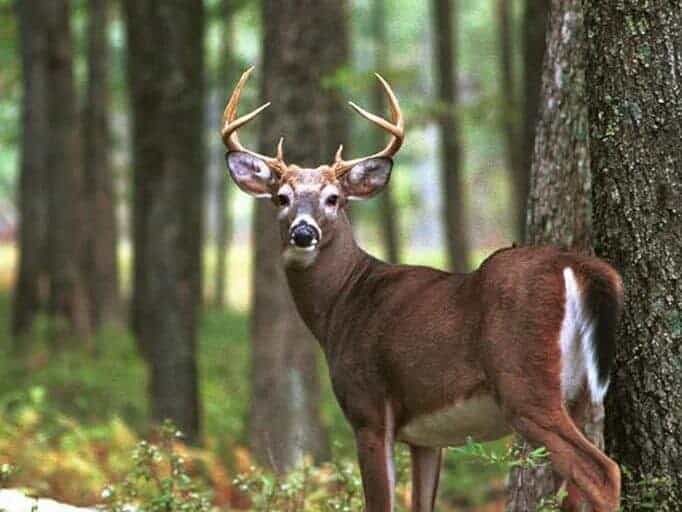
You Can’t Hold All the Deer All the Time
If you use the strategies I will mention in this article, you will start to attract and hold more deer on your property. Although they will leave quite often, they will also come back. Regardless of what you do, most of the whitetail population will likely visit nearly every property in the area. So if there is one huge buck in the area, you cannot blame your neighbors for taking him when he goes on their property just like you would have.
Another situation that will hinder the average buck maturity is if your neighbors are harvesting every buck they see. Again, there is nothing you can do with it except have a conversion with them about deer management. They will probably tell you to worry about your property and they will worry about theirs. So if your neighbors are shooting every buck they see and you have a small parcel of land, there may not be a ton you can do.
All you can hope for is making your property much safer, and more appealing to the bucks in the area. All deer love food plots and other resources, but mature bucks love safety. So, while we are going to work on making year-round resources for deer, we also want to make our properties safer than others in the area. That is the secret to holding mature bucks on your property.
The Deer Necessities – The Simple Deer Necessities
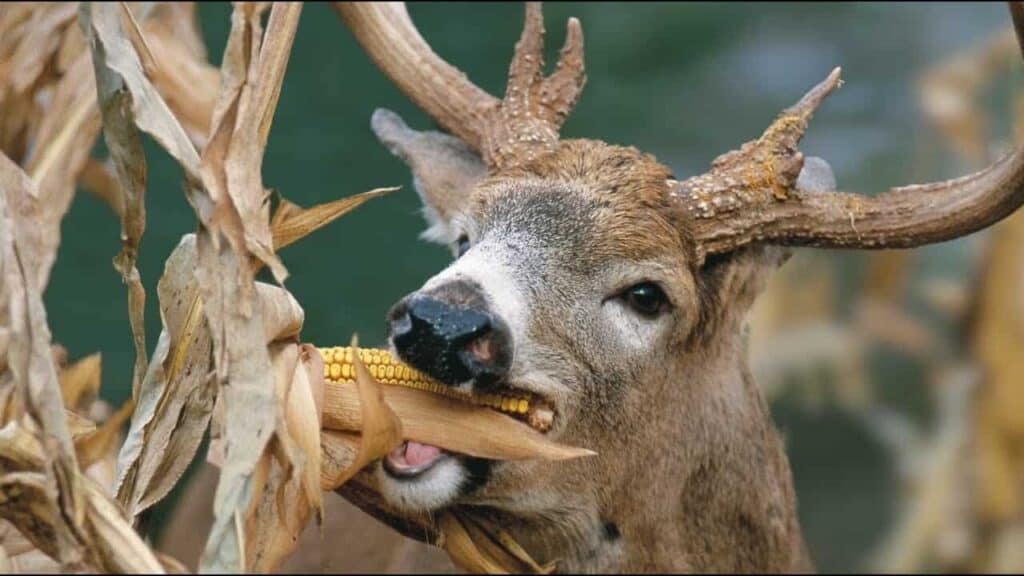
Food
Providing food for whitetail is not a super hard thing to do, but there are many ways to do it. We want deer to have food throughout the year and have enough for the entire population. Naturally, your parcel of land is limited to how many deer will live in the area. Every area has a “carrying capacity”. If the habitat can only feed 200 deer and there are 300 deer on it, they will either move on to a new area or die. Nature has a divine way of evening everything out.
I say all of that for the plain reason that more food equals more deer. Plus the deer already in the area can get more nutrition from what you provide compared to the rather low-quality food that they may have to consume if the area does not produce a lot of food for them.
The most obvious way to feed the deer on your property is by planting a food plot. Food plots are a whole other animal in the hunting world. On the surface they are simple, and if you want it to be simple it can be. Although a lot of wildlife biologists have done a lot of great research and helped companies produce some killer plants to use in food plots. The theory behind some of them can be complicated, but do not let that intimidate you, food plots are one of the single best additions you can put on any size hunting parcel.
If you are working on a small parcel of land you will likely not have a ton of acreage to use as a food plot, so you should read up on micro-food plots. They are small yet effective food plots that will be a valuable resource for deer, especially during the end of the year.
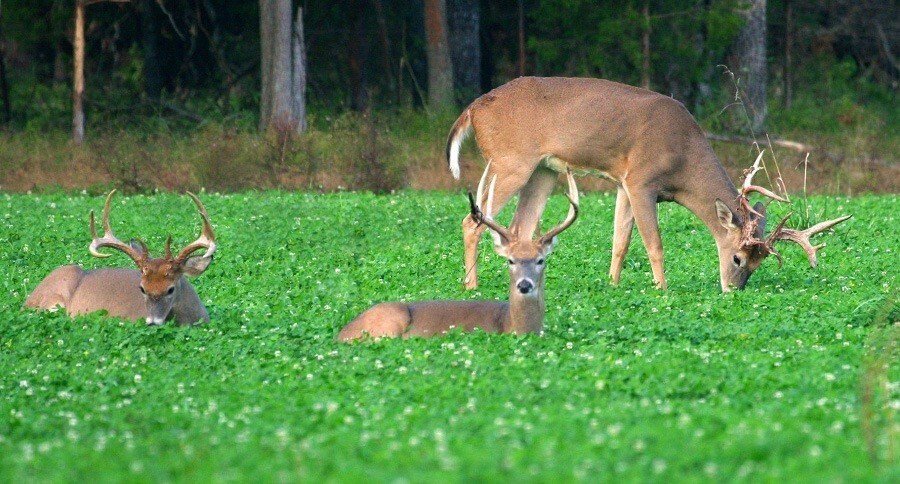
Another way to provide more food for your whitetail is to enhance the natural food sources. Doing things like cutting down unwanted trees around young oak trees will lead to more acorns in the coming years. You can do the same thing for the shrubs and berry-producing plants, many of which will produce twice as many berries if you give them more sunlight and a little bit of fertilizer.
Another thing that you can add to your property is a mineral site. Now, this is not just a salt block. Deer love salt, but they need more than salt alone. Mineral supplements are amazing for deer and they really aid their antler growth and milk production. Although if you are going to use mineral supplements you need to know what is in them and what deer need. Most of the time big companies will sell “mineral supplements” that are 80% salt, which is just about useless unless you are looking for an attractant.
Water
Water is a valuable resource that every mammal needs. Some may get most of it from their food, but often that is not enough. While whitetail deer do not drink as much as you and I, they still need to drink water. This may also be something that you do not have to worry about though. The only time you should think about manually adding water to your property is if there are not any natural water sources nearby or if the food source you are hunting near is dry.
The best place to add a watering hole is between a food source and a bedding area. Deer are lazy animals, and they are going to be where they can spend the least amount of energy. So, if your neighbor has nice food and bedding areas, you can have the same with the addition of water. Then you have everything a deer would need. This is going to make them much more likely to spend more time on your property.
To add water to your property, all you need to do is dig a rather large hole and place a 55- or 110-gallon metal tub in the ground. It is a lot of work, but it should pay off. Plus, it is not something you are going to have to fill up like a dog bowl, nature will take care of that. All the maintenance you should do is check it out every few months and remove any sticks or leaves that get caught in it. You do not want to leave it above ground because that will feel unnatural to deer. If you sink it into the ground, they do not see any difference between your tub and a natural pond.
Cover – Make it Safe
Food and water are going to attract plenty of deer to your property. Depending on what is surrounding your property, it could make it the go to place for most deer in the area. Although cover is what mature bucks are after. They did not get to a mature age by running to the tastiest corn pile in the area. So to attract and hold mature bucks to your property, you are going to have to put in the extra work to make bedding areas safer, stage your food plots, and add cover to high traffic trails.
When deer are looking for bedding areas, more times than not they are going to bed down in the safest place they can find that is not too far from a food source. Do some leg work and figure out where the bedding areas are on your property. Then once you know where they are, improve them. This is where the idea of the hinge cut comes in. Hinge cutting can add a lot of cover to an area that will make deer feel much safer. Plus, if you hinge cut inferior trees, you are making way for those awesome oak trees, which will produce more acorns for your deer in the coming years.
Jeff Stugis, a very popular and successful whitetail habitat manager, has a wonderful YouTube video about making buck bedding areas on small parcels of land. You can check it out here:
The next thing you need to do is limit the human presence on your land. You want deer to feel safe on your land, so racing your side-by-side all over the place is probably not the best way to do that. I get that if you want to do that on your land then you should, but if you are serious about deer management it is a bad idea. In general, we want to limit or eliminate all non-hunting behavior on your small parcel of land. This is going to make deer feel safer in general, especially if your neighbors are not doing the same.
One of the hardest things you will have to learn to do is limit the hunting pressure on your land. Especially while hunting on a small property. It is easy to go on public land and find 3-5 hunters hunting on the same 20-acre plot. Obviously, those public lands are super pressured, and deer are going to be looking for a safe place to be far from that 20 acres.
Many whitetail managers agree that you should not have more than one hunter per 20 acres up to 50 acres if you can. So, if you have 100 acres, that is enough for 2-5 hunters, 2 being better for the property. If whitetail feel pressured on your property, they will likely spend more time on other properties, especially if your neighbors are not hunting.
The last thing you need to do is designate an area of your property that is absolutely off limits. The size of this area is going to be dependent upon how big your property is, but if you can afford it, designate a few acres worth of bedding area. No one should go into this area, the idea is that deer will always be able to go there and feel safe. This is especially important during the season. If there is a big buck in the area, you would rather him bed down in an area you do not hunt on your property rather than a neighbor’s property.
Manage Those Does
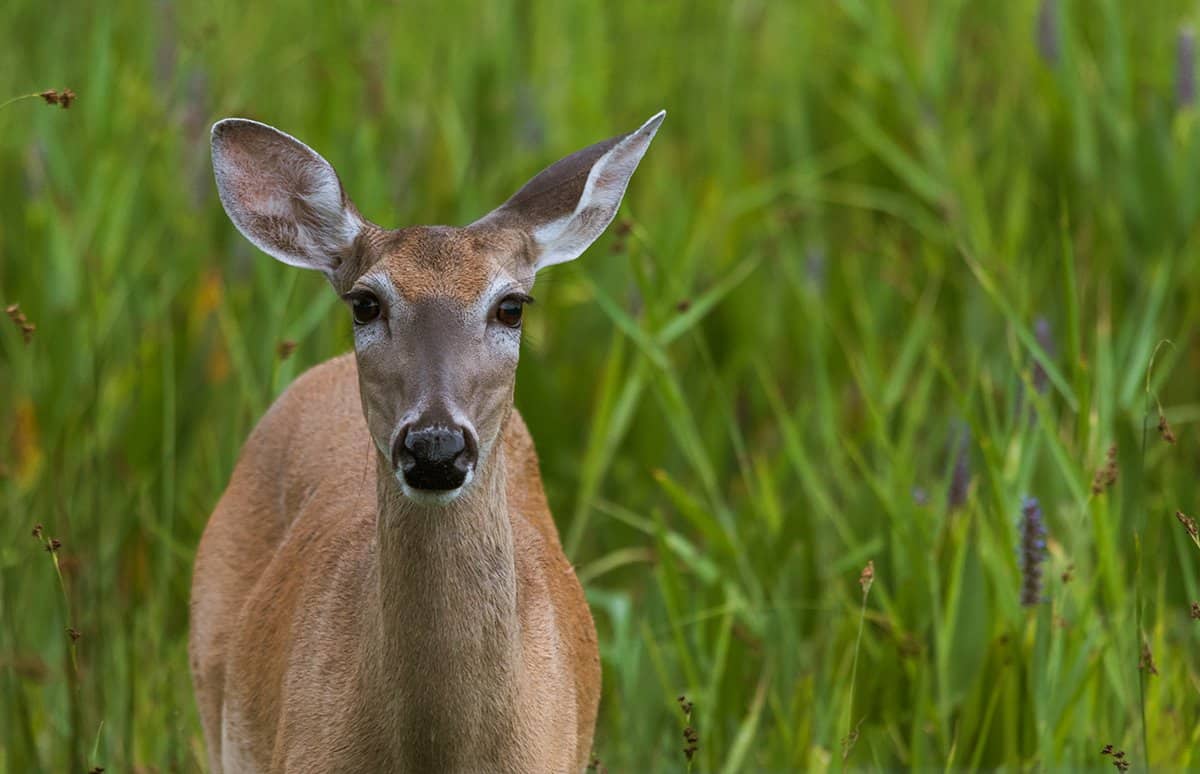
This tip is more for adding more bucks to your property. We want to manage the doe population on our parcels. If we have many more does rather than bucks, that is not ideal. Plus when does have male fawns, the mother will run them off when they get about a year or year and a half old. Those young bucks typically find a new home range that does not include where the mother is. So if you are providing food and water for these does in hopes they produce more bucks, they are typically going to run their buck offspring away.
Now this obviously does not mean we need to shoot every doe we see. We just want to try our best to balance the population as well as we can. Nature has its own way of balancing the sex ratio if we were to leave it alone long enough. However, most of the time there are other hunters in the area or surrounding area that are going to harvest bucks and throw that out of balance.
So every year I would suggest taking a few does out during the early season. Taking 3-5 mature does may not sound like a ton but it does help in the grand scheme of things. In many states, you are allowed to take many more than that. In my home state of Georgia, we can shoot 10 does in a year. Although I would not suggest taking this limit off your property every year.
You can get a good idea of what your buck to doe ratio is by using trail cameras and studying what you find. There are a lot of different ways to estimate buck to doe ratio, but using a round-about guess from trail cameras is often good enough. If you are seeing many more does than bucks, take 5 or 6 in the early season. If you are seeing about the same number of bucks and does or slightly more does, take about 2 or 3 does. Personally, I take a 2 or 3 does every year at the minimum mainly just because I want to, but it does help the other deer.
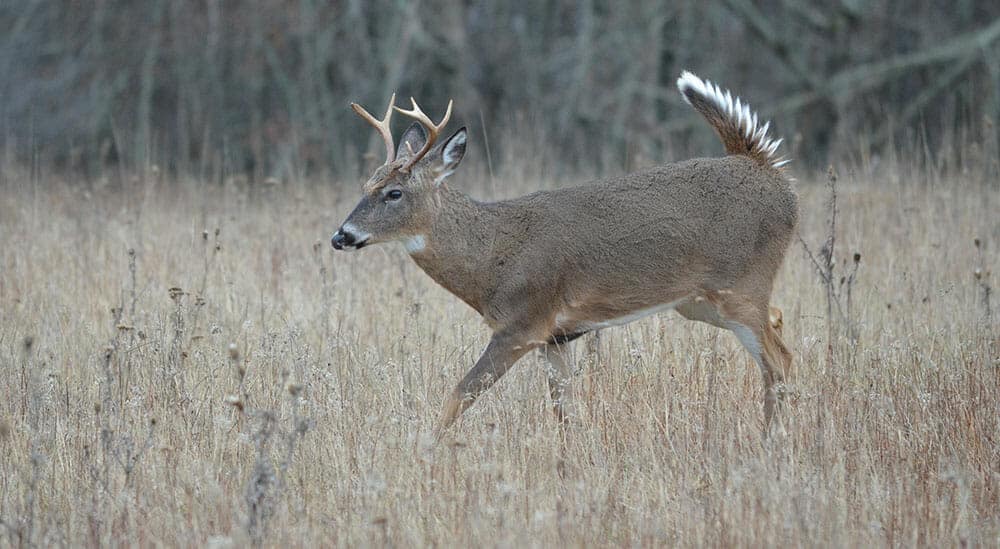
Shooting these mature does helps us with two things. First, it makes the food sources in the area last longer and lets the other deer in the area–including bucks– get more nutrition. Secondly, we want to shoot mature does rather than young does because theoretically these young does are going to produce more fawns for you in the next few years. Whereas a mature doe may not produce as much or may die naturally in a few years, so she is less valuable than the young doe.
The Extra Mile
After you make sure your property has all the basic necessities for whitetail to survive, you will probably already have the most attractive property around. Although if your property is competing with other properties, or neighboring hunters are as serious as you, then you are going to have to go the extra mile. Or miles rather, these tips are a lot of work, but in the long run, they will make your property much more attractive than before.
Choosing Trees
The Mighty Oak
The types of trees that you allow to grow on your property will be a major factor in the natural food sources available to whitetail in the area. If you really want to provide more natural food sources I would suggest that you cut down quite a few unwanted trees that are close to younger oak trees. This will give the oaks more sunlight and soil nutrients, which will in turn make them produce more acorns, which deer obviously love.
You can also combine this with creating bedding areas. If you hinge cut unwanted trees, you will provide more cover for deer and if you do it correctly, you will create a bedding area.
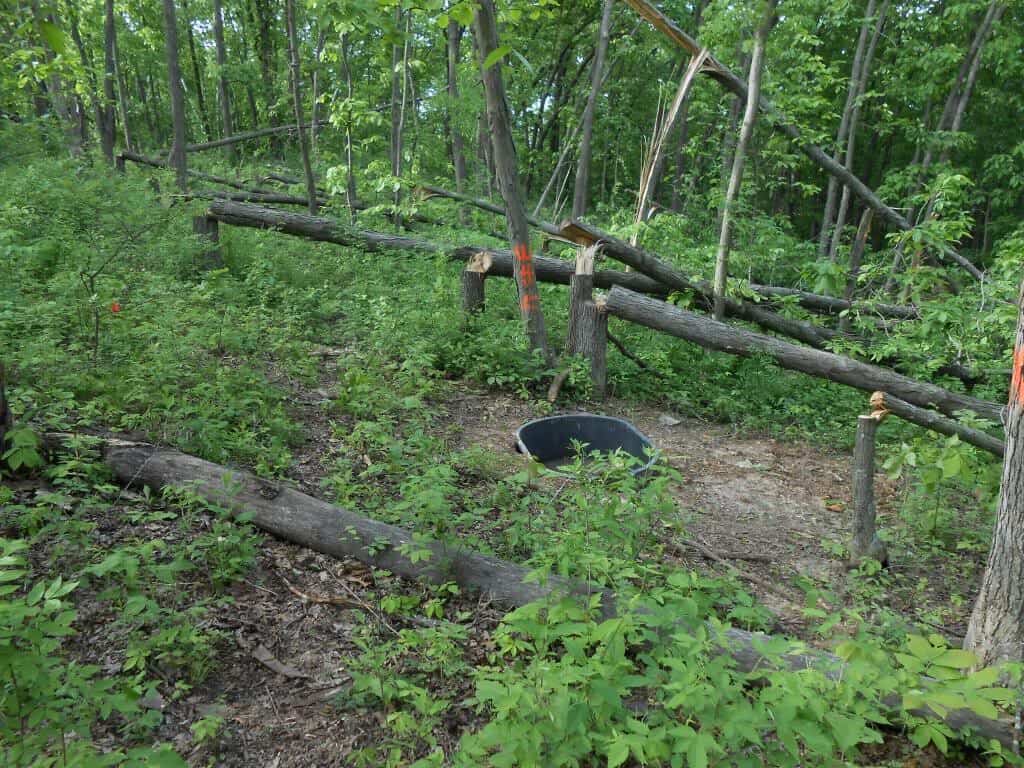
You can also cut down unwanted trees in areas that do not have oaks as well. I would not go crazy and cut down every tree that is not an oak, but if you do this in a few areas you will create an area that starts to grow underbrush. This new underbrush will consist of tree saplings, biars, and all sorts of other plants that deer will eat.
My dad had a lease in Kentucky that we hunted for years, and one year they clear cut quite a few trees just on the other side of the property line earlier in the year. That area grew a ton of brush that the deer certainly liked. That new brush was just on the other side of a ridge from one of our favorite stands. In that area we had a ton of acorns on the ground and I remember seeing a lot more deer coming from that direction that year to feed on the acorns compared to other years when they were bedding elsewhere. I was also able to kill my largest buck at the time that year. Who just so happened to come from that brushy clear cut after my dad let out a few awesome grunts that brought him over the hill like magic.
Pines Have a Place Too
Pine trees are not all bad either. Although they do not produce food for whitetail, they are good at producing cover, especially if they are hinge cut. If your entire property is a pine forest, there is not much you can do about it, but if there is only a small amount of pine trees throughout the area, that may be a go-to bedding area for whitetails.
We can also use pine trees to create what some habitat managers call a “thermal refuge”. During the cold winter months, pine trees and pine needles can provide a lot of warmth. So when the temperatures plummet, it is not too farfetched to assume deer will spend more time in the warmer areas.
So one thing to look into could be planting more pine trees in a certain area of your property, especially if you live up north where it gets extremely cold during the winter.
Add Fruit & Berries
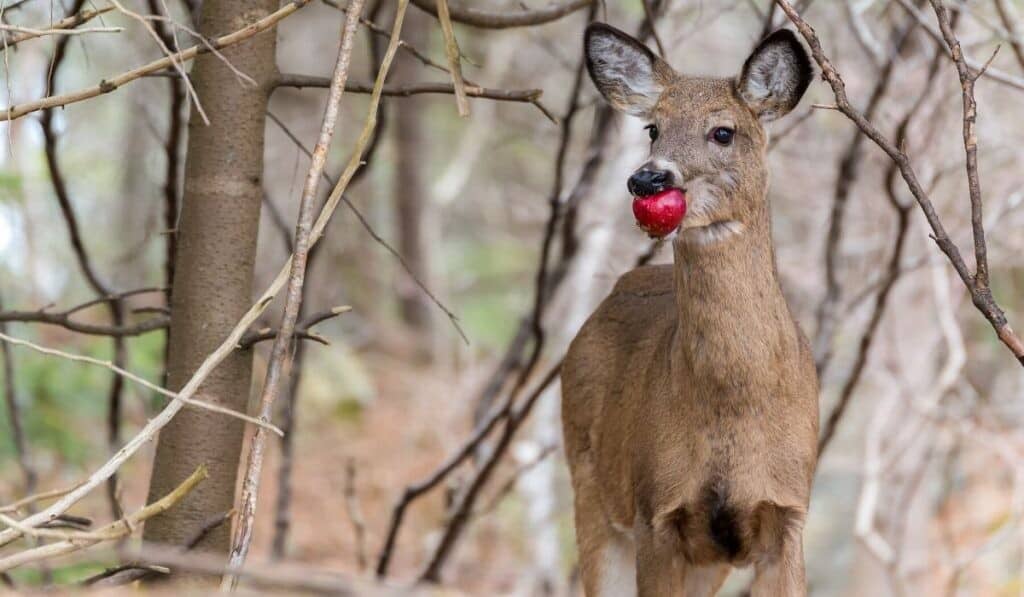
Deer love fruit, and they will also tear up berry bushes. Both of these are awesome food sources for whitetail and wildlife in general. Plus, in about a weekend’s worth of work, you can plant a fruit orchard that will produce fruit for years to come.
If you have the room, I recommend planting a few rows of fruit trees. There are plenty of fruits to choose from, but apples are a classic that people also love. Planting these trees is the easy part, you will have to maintain them throughout the year. When you first plant them, you may have to put cages around them to keep the deer from killing them before they have a chance to mature.
You will also need to spray the weeds around them, and also add fertilizer if you want them to grow and produce fruit sooner rather than later. Now this process is going to take years. It is not like making a food plot that will grow and die in the same year. It is an investment, but it can add that one extra layer to your property that makes it more appealing than the others around it.
Likewise, you can plant rows of berry bushes. At my parents’ house they have a natural cluster of black berry bushes, and the deer love them. When they come into season, we have to try our best to harvest them before the deer eat them all, which is a challenge, but we still manage to get enough for my dad to make black berry jelly.
I recommend planting what is the most natural to your area. So if you have wild black berry bushes, plant more of those. You should also not ignore the natural berry bushes or vines. If you nurture them as well as the ones you plant, they will also produce more food for deer. Again, adding berries is not essential, but it is just one more thing to make your property stand out. Honestly it is a lot of work, but you do not have to do every single tip in this article to see results.
Planting Native Grasses
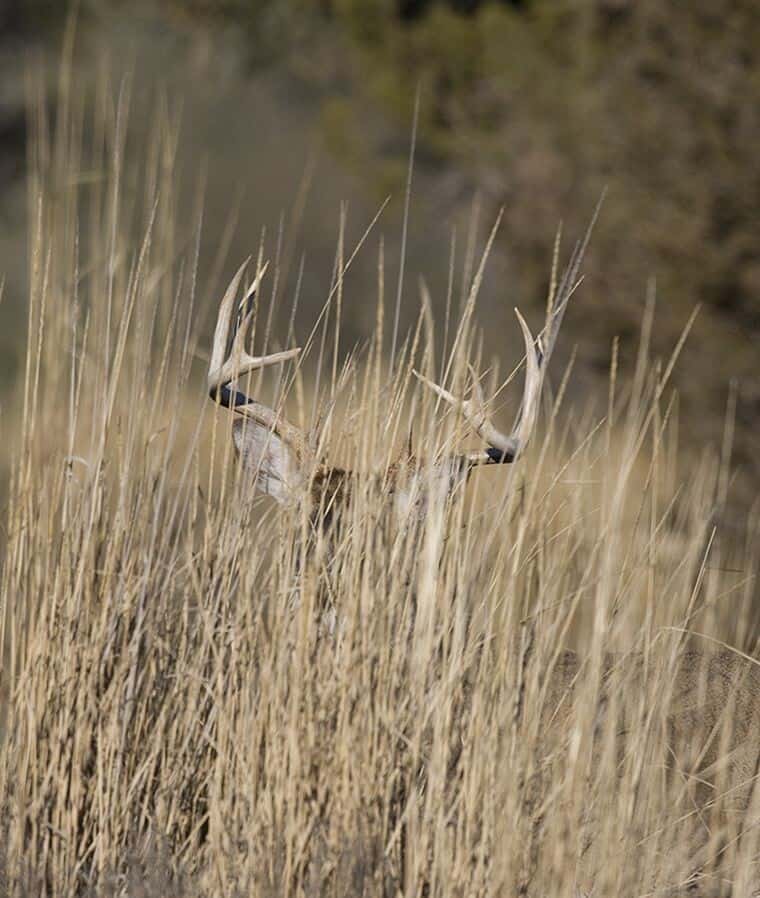
If you have areas that are open grass fields not used for agriculture, one thing you can do is to plant tall native grasses. Grasses like switchgrass can grow to be very tall, which will provide more cover for whitetail, especially mature bucks. Plus, they will also bed down in tall grasses. It does not have to be a huge field either, but any cover you can add will help deer feel better about being on your property compared to a neighboring property.
Analyze Your Property and Those Around You
Not every property needs everything I mentioned here. Study your parcel and find out exactly what it has and what it is lacking. If there is no water for miles, consider adding a water source or two. If your neighbor has an apple orchard, fruit trees may be a waste of time. If most of your property is open hard wood, you probably need to add more cover to it.
That being said, most properties would benefit from having the basic necessities on them. If you have enough land, adding a food plot is almost never a bad idea. Adding metal tubs of water in the ground cannot be a negative thing either if you are unsure if you need one. Cover and security is the most important thing you can add to your property though, that is going to be the key to holding mature bucks on your property.
If you are competing with neighboring properties that are also putting in an effort to better manage whitetail, then that is when you are going to have to go the extra mile and do a few more advanced management techniques. Culling a few dozen unwanted trees is a lot of work but it can have dramatic effects, so can planting new trees.
It is all about your particular situation though. Every property is different so you will need to study your property and add what will be the most helpful. Using these tactics in excess will not cause any negatives, it is just about where your time and labor is most rewarded.
Thank you for reading my article about how to attract and hold bucks on small properties. I hope you enjoyed it and learned something you didn’t already know. If you like my content, subscribe to my weekly update. If you have any other questions about small property habitat management or just want to connect, feel free to email me at [email protected].


